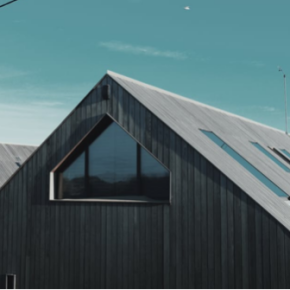
Are prefabricated homes the answer to UK’s affordable housing crisis?
In a nation that is obsessed with the property market, the UK housing crisis is causing quite a stir. Help to buy schemes and ISA’s have been implemented and withdrawn to help ease the problem but are prefab homes the answer to help solve the affordable housing crisis?
For those who are unfamiliar with the term, a prefabricated home is a dwelling that is manufactured off-site in advance in standard sections that are easy to transport and assemble. Essentially a flat pack house.
It is estimated that offsite built homes can be produced in a fraction of the time it takes to build a more traditional home, in addition to the cost savings of the reduced requirement for skilled labour.
In fact looking at the big picture, there are a vast array of benefits to pre-fabricated houses in comparison to more traditional brick built ones.
With offsite construction comes fewer on-site construction related accidents. Recent statistics showed that 2.2 million working days were lost in the industry due to work related injuries and illnesses. Up from 1.7 in 2014/15. Working in smaller, more controlled environments reduces injury risk and number of staff forced to take leave.
Continuing, pre-fabricated homes can be built almost entirely out of sustainably sourced materials such as Wood and recycled glass. With the construction industry responsible for 4% of particulate emissions, the more sustainably sourced and environmentally friendly homes the better.
Of course, construction of pre-fabs will most likely still involve diesel powered vehicles, but until the widespread adoption of electric or a yet to be developed alternative emerges, the only way to guarantee a cleaner build is to use more sustainably sourced materials.
Another benefit of prefabs is the speed of their construction. On average it takes UK house builders 8 months from start to finish – widely regarded as unacceptable to politicians and impatient would be home owners. Pre-fabs on the other hand can be as quick as 48 hours. To put that difference into perspective, that means roughly 121 prefabs could be built in the time it takes to build just one traditionally constructed house.
However, despite this and all the above benefits, prefabs are still hard to find in the UK. Indeed suffering from a poor post war reputation, there is unease from many prospective house buyers about living in such a building.
Bricks and stone are by far still the preferred building material for UK home owners who want to live in a house that is distinctly different to, say, the Garden shed. It is perhaps for this reason why housing developers such as Strata Homes put an emphasis on quality and luxury as this is what British home buyers seem to value most of all.
Looking forward into the future, prefabs are going to have to be more properly considered due to their sizable benefits over traditional construction – especially during a time of an ever on going housing crisis.
Until then, the more the industry can improve on sustainability and environmentally friendly practices – the better.
Latest news

26th July 2024
Enfield Speciality Doors completes world-class project for Atlas Copco HQ
A rundown office and warehouse building completely transformed into a modern headquarters for Atlas Copco has been fitted with more than 120 internal fire doors from Enfield Speciality Doors.
Posted in Access Control & Door Entry Systems, Articles, Building Industry News, Building Products & Structures, Building Systems, Case Studies, Doors, Interior Design & Construction, Interiors, Posts, Restoration & Refurbishment, Retrofit & Renovation, Security and Fire Protection, Sustainability & Energy Efficiency, Timber Buildings and Timber Products, Wooden products
26th July 2024
Abloy UK launches new white paper
Abloy UK, a leading provider of security and access control solutions, has launched a new white paper.
Posted in Access Control & Door Entry Systems, Architectural Ironmongery, Articles, Building Industry News, Building Products & Structures, Building Services, Doors, Facility Management & Building Services, Health & Safety, Information Technology, Innovations & New Products, Publications, Research & Materials Testing, Security and Fire Protection
26th July 2024
MCRMA Member Profile: David Roy, Director of Roofconsult
David Roy of MCRMA member company Roofconsult has more than 50 years’ experience to draw upon working in the building envelope sector and a unique perspective on how it has changed in that time.
Posted in Articles, BIM, Infrastructure & CAD Software, Building Associations & Institutes, Building Industry News, Building Products & Structures, Building Services, Building Systems, Cladding, Information Technology, Restoration & Refurbishment, Retrofit & Renovation, Roofs, Walls
26th July 2024
Strand: Enhancing Door Functionality and Safety
Craig Fox, Sales Director for Strand Hardware, outlines how door industry professionals might apply door limiting stays…
Posted in Architectural Ironmongery, Articles, Building Industry News, Building Products & Structures, Building Services, Doors, Facility Management & Building Services, Health & Safety, Restoration & Refurbishment, Retrofit & Renovation
 Sign up:
Sign up: